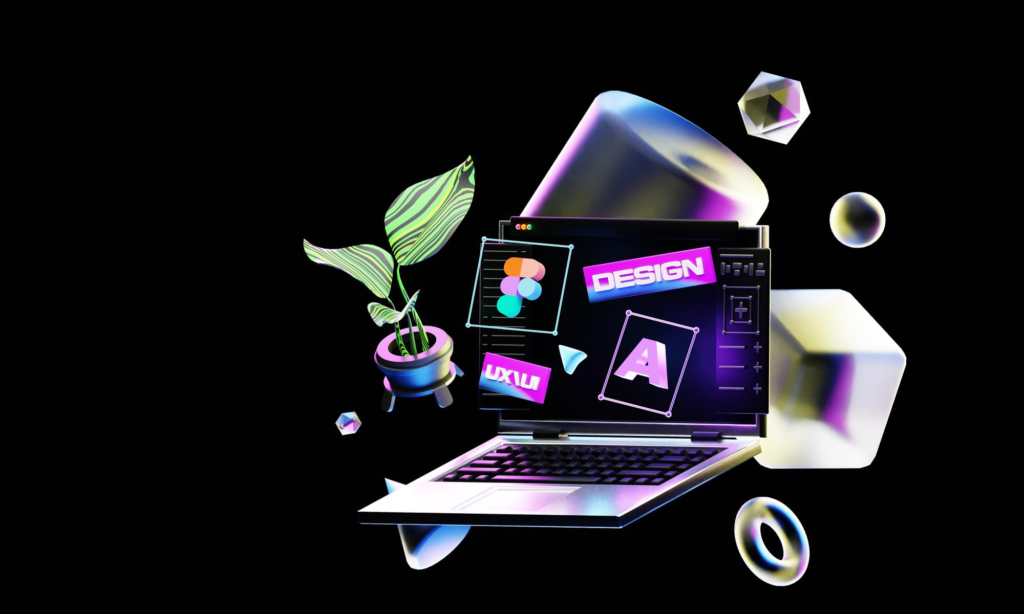
Discover what makes design unforgettable with Cr8ive Control! Explore the art, psychology, and storytelling behind visuals that captivate, from vibrant colors to bold typography. Learn how emotion, simplicity, and cultural nuances create lasting impact.
Meet Rachel, seated on her favourite point on her balcony, going through a newspaper that’s a riot of headlines and ads. Her fingers stopped, eyes fixed on one of the ads: an explosion of fearless teal, a quirky typeface that seems to be winking at her and a page layout that’s so smart it makes a narrative from a glance. This one visual in a sea of noise sings.
That’s design at its finest: not just ink on the paper but a moment which grips you, holds you, and stays with you.
So, what is design? And what sorcery makes some visuals unforgettable while others vanish into the blur? Let’s unravel the art, soul, and spark of design that stops us in our tracks.
Design: More Than Meets the Eye
Design isn’t just about making things pretty. It’s a language, a strategy, a feeling. It’s the art of solving problems with creativity and intention.
“Design is the silent ambassador of your brand.”
— Paul Rand
It’s the first impression, the one that counts, the atmosphere. When it’s a stylish logo or a courageous billboard, or intuitive interface of the app, design determines the formulation of our reality.
At its core, design is about communication. Research from the Design Management Institute (DMI) shows that design-driven companies outperform their competitors by 219% on the S&P Index over a decade. Why? Because great design doesn’t just look good; it connects, persuades, and converts. It’s the difference between a website that’s abandoned in seconds and one that keeps users clicking for hours.
So, what is it that gives a visual that ‘leaps’ off the screen and sears itself into your memory? It is not a matter of luck or a lucky accident. The visuals that stay are a melting pot of science, psychology, and a little of creative genius. Let’s break it down.
The Anatomy of Unforgettable Visuals
Then, what is it that gives a visual such verve that it burns itself into memory? It is not a matter of luck or a coincidence only. Visuals create magic through science, psychology, and a little dash of creative genius.
1. Emotion: The Heartbeat of Design
Humans are emotional creatures. We don’t just see visuals, we feel every inch of it. This is the reason that a certain visual won’t appeal to us if it doesn’t speak to our soul. A study in the Journal of Consumer Psychology found that emotionally charged visuals increase brand recall by 42%. Think of Nike’s iconic “Just Do It” campaigns: gritty, inspiring, and raw. Those images don’t just sell sneakers; they sell a mindset.
Take Coca-Cola’s holiday ads. The twinkling lights, the jolly Santa, the warm fuzzies of sharing a Coke—it’s no coincidence that 80% of consumers associate the brand with joy, according to a 2023 Kantar study. Great visuals tap into universal emotions: joy, nostalgia, hope, and even fear. They make us care.
2. Simplicity: Less is More
In a world that is screaming for attention, simplicity rules the world. An MIT study reports that human brain processes simple visual 60,000 times faster as compared to text. Ever wanted to know why the minimalist look of Apple is so legendary? The well-defined lines and space of white, with one point of focus, gives the product a center stage. It’s not just pretty; it’s strategic.
However, simplicity is not boring. It’s about clarity. As German designer Dieter Rams phrased it,
“good design is as little design as possible.”
Take the fluff away, and what is left is pure impact.
3. Colour: The Silent Storyteller
Colour isn’t just decoration; it’s psychology. A study in Colour Research & Application found that colour influences 85% of purchasing decisions. Red screams urgency (think sale signs). Blue builds trust (hello, banks and tech giants). Green feels fresh and eco-friendly.
Take Spotify’s neon green and black palette. It’s bold, youthful, and instantly recognizable.
Fun fact: Spotify’s green is so distinctive that it’s trademarked in multiple countries under intellectual property laws like the U.S. Lanham Act. That’s the power of colour done right.
4. Typography: The Voice of Your Visual
Fonts aren’t just letters, they’re personality. Serif fonts like Times New Roman feel classic and trustworthy. Sans-serif fonts like Helvetica? Modern and approachable. A 2021 study in Typography & Design showed that font choice impacts readability and brand perception by 68%.
Ever notice how luxury brands like Chanel use elegant, custom typefaces? Or how Netflix’s bold, custom font screams “binge me”? Typography sets the tone. Get it wrong, and your message fails.
5. Storytelling: The Glue That Binds
The greatest visuals create a story. Remember the Airbnb’s “Belong Anywhere” campaign – pictures of comfortable homes, different faces and distant countries, which make you put everything in packing. A 2022 Harvard Business Review article noted that storytelling in design boosts customer engagement by 33%.
Stories make visuals relatable. They turn a product into an experience, a brand into a friend. And when done right, they’re impossible to forget.
The Legal Side of Design: Protecting Creativity
Good design isn’t just about design; it’s about protection. Such acts of intellectual property, such as the U.S. Copyright Act of 1976 and the EU’s Community Design Regulation (2002), protect original designs against copying. Trademarks such as McDonald’s golden arches or even Nike’s swoosh prevent other persons from using brand visuals.
Fun fact: According to the World Intellectual Property Organization (WIPO), more than 4 million trademarks are registered in the world.
But it’s not just about logos. Design patents protect the look of products, like the unique curve of a Coca-Cola bottle. Ignoring these laws? That’s a fast track to costly lawsuits. In 2023 alone, design infringement cases cost companies $2.7 billion in damages, according to a Forbes report. So, create boldly—but protect fiercely.
Cultural Nuances: Design That Speaks Globally
We live in a global village, and design must speak to diverse audiences. What works in New York might flop in Tokyo. Journal of Cross-Cultural Psychology found that cultural values shape design preferences—Western cultures lean toward bold, individualistic visuals, while Eastern cultures favour harmony and subtlety.
Take the color red: it’s lucky in China but alarming in Germany. Or consider minimalism: it’s considered chic in Scandinavia but can feel cold in Brazil.
At Cr8ive Control, we get it; design isn’t one-size-fits-all. It’s about crafting visuals that resonate, no matter where you are.
The X-Factor: Breaking the Mould
Unforgettable visuals set trends like the well-known Banksy’s street art, which is raw, rebellious, and thought-provoking. Or Tesla’s futuristic Cyber-truck ad campaign – hate it or love it – you remember it. These designs take risks. They challenge norms, and they make you think outside the box.
As Steve Jobs said,
“Design is not just what it looks like and feels like. Design is how it works.”
Functionality meets flair. A beautiful app that crashes? Useless. A clunky website with killer visuals? Forgettable. The magic happens when form and function dance together.
The Future of Design: Where Are We Headed?
Design is evolving faster than ever. AI-generated visuals, immersive VR experiences, and sustainable design are reshaping the game. By 2030, the global design industry is projected to hit $1.7 trillion, as per McKinsey report. But one thing won’t change: the need for human connection.
Sustainability is huge. Brands like Patagonia use eco-friendly visuals to align with consumer values—70% of Gen Z prefers sustainable brands, per a 2023 Nielsen study. And with AI, designers can experiment faster, but the human touch—empathy, intuition, soul—remains irreplaceable.
Why It Matters: Design Is Your Superpower
Here’s the truth: design isn’t just decoration. Its power. Its influence. It’s the sizzle that takes a look and turns it into a connection, a customer, and makes them fans. Regardless of whether you are a global brand or a small startup, design is your voice in the loud world.
So, what makes visuals unforgettable? It’s the alchemy of feelings, simplicity, colour, typography, and storytelling. It is the boldness to go against the rules and the sense of culture. It’s the heart which makes something authentic.
At Cr8ive Control, we believe design is a celebration of human creativity. It’s not just what we do in the marketing industry, but who we are. So go bold. Go vibrant. Go unforgettable. Because in a world full of noise, great design is the signal that cuts through.
References
- Design Management Institute. (2015). The Value of Design.
- Journal of Consumer Psychology. (2019). Emotional Impact on Brand Recall.
- Color Research & Application. (2020). Color and Consumer Behavior.
- Typography & Design. (2021). Font Choice and Brand Perception.
- Harvard Business Review. (2022). Storytelling in Marketing.
- Journal of Cross-Cultural Psychology. (2024). Cultural Influences on Design.
- World Intellectual Property Organization (WIPO). (2023). Global Trademark Statistics.
- Forbes. (2023). Design Infringement Case Costs.
- McKinsey. (2024). The Future of the Design Industry.
- Nielsen. (2023). Consumer Preferences for Sustainable Brands.
- U.S. Copyright Act of 1976.
- EU Community Design Regulation (2002).

